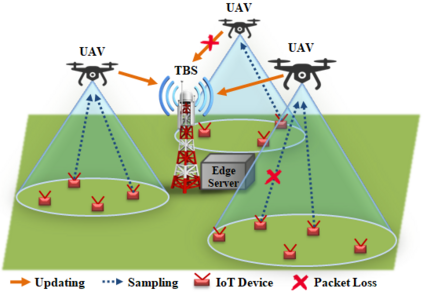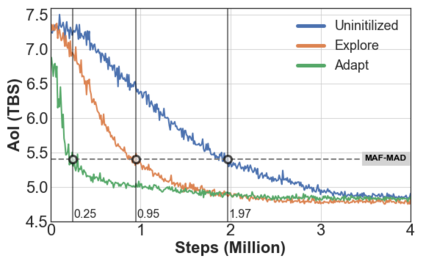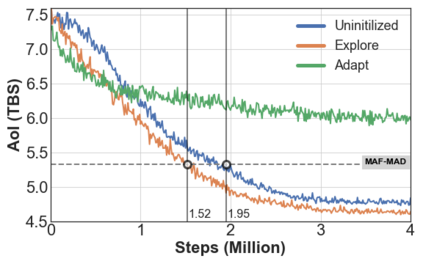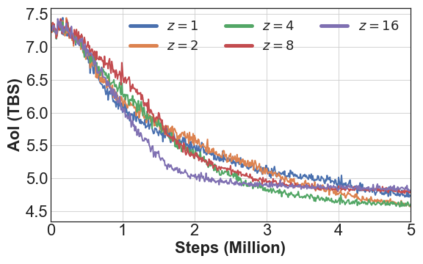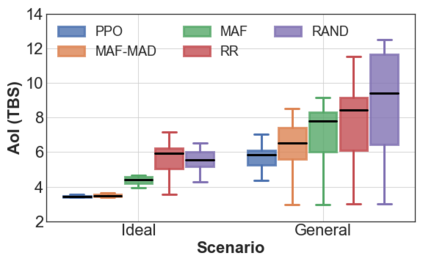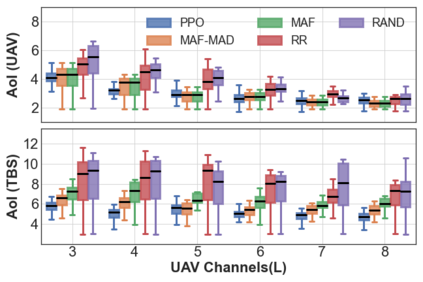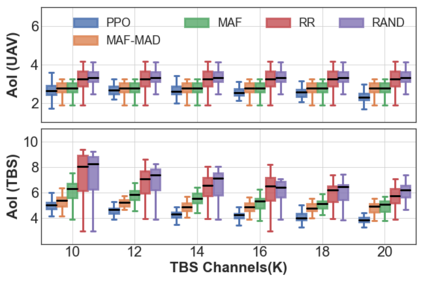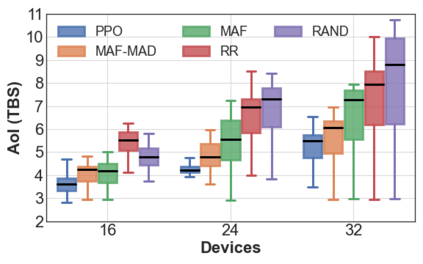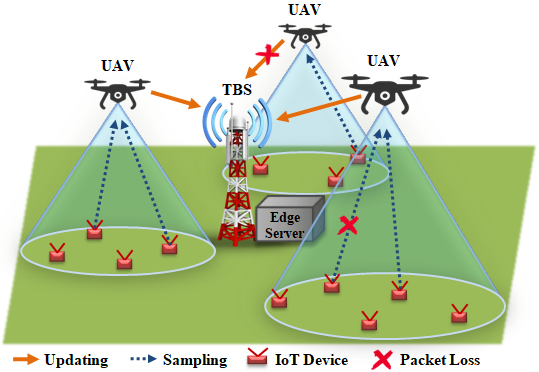Unmanned Aerial Vehicles (UAVs) are used as aerial base-stations to relay time-sensitive packets from IoT devices to the nearby terrestrial base-station (TBS). Scheduling of packets in such UAV-relayed IoT-networks to ensure fresh (or up-to-date) IoT devices' packets at the TBS is a challenging problem as it involves two simultaneous steps of (i) sampling of packets generated at IoT devices by the UAVs [hop-1] and (ii) updating of sampled packets from UAVs to the TBS [hop-2]. To address this, we propose Age-of-Information (AoI) scheduling algorithms for two-hop UAV-relayed IoT-networks. First, we propose a low-complexity AoI scheduler, termed, MAF-MAD that employs Maximum AoI First (MAF) policy for sampling of IoT devices at UAV (hop-1) and Maximum AoI Difference (MAD) policy for updating sampled packets from UAV to the TBS (hop-2). We prove that MAF-MAD is the optimal AoI scheduler under ideal conditions (lossless wireless channels and generate-at-will traffic-generation at IoT devices). On the contrary, for general conditions (lossy channel conditions and varying periodic traffic-generation at IoT devices), a deep reinforcement learning algorithm, namely, Proximal Policy Optimization (PPO)-based scheduler is proposed. Simulation results show that the proposed PPO-based scheduler outperforms other schedulers like MAF-MAD, MAF, and round-robin in all considered general scenarios.
翻译:无人驾驶航空飞行器(UAVs)用作空中基地站,从IOT设备向附近的地面基地站(TBS)转发具有时间敏感性的包包。为此,我们提议在UAV中继的IOT网络中对UAV中继的IOT设备包进行排列,以确保TBS中的新(或更新)IOT设备包进行更新(或更新)是一个具有挑战性的问题,因为它涉及以下两个同时步骤:(一)对UAVs[Hop-1]和(二)在IOOT设备中生成的IOT(Hop-1和AOD)样本包进行更新至TBS[Hop-2]。为了解决这一问题,我们提议在UAV-Relayed IOT网络中进行“AID”时代的定序算法,在UAV-AF中将“最易使用AI1(MAF)基础)级的IAVAV(H-1和最大AOD(MAD)级变现时程中,在USO-AVAVA-AVAFA-S-S-S-LLLLLLLLLLLAD政策下显示最佳进度表。

